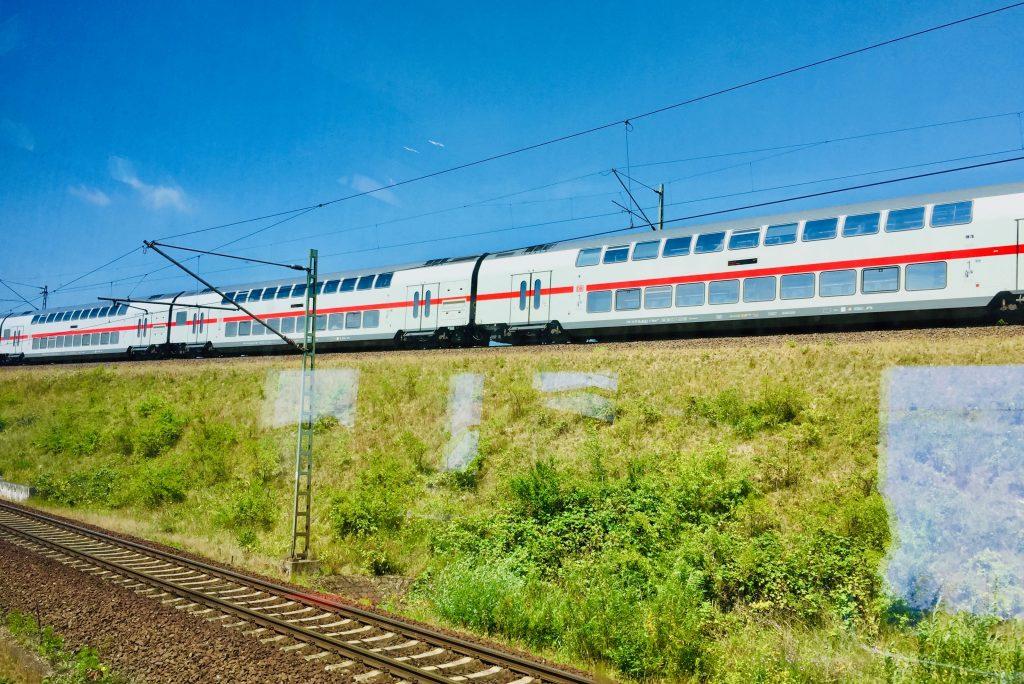Keep those turbines turning
When Greta Thunberg sailed across the Atlantic on board a zero-carbon yacht to demonstrate her commitment to cutting CO₂ emissions, she took the world by storm. Her actions helped to raise global awareness of the growing climate crisis and encouraged many to re-evaluate how they travel. ‘Flight shaming’ soon entered the lexicon and the ‘Greta effect’ well and truly took off.
Emissions caused by the aviation industry make up around 3% of the EU’s greenhouse gas emissions and over 2% of global emissions. Meanwhile, the public’s climate consciousness is growing and more and more people are choosing to reduce their carbon footprint by travelling by rail – particularly in Europe, where taking the train is often a perfectly viable alternative.
Trains trump planes, almost always
Finding consistent statistics on train emissions is difficult for a number of reasons. Consider for instance that some countries still operate diesel trains, while others run electric. But the scientific consensus is overwhelming: rail travel virtually always emits less CO₂ and other greenhouse gases than flying.
A passenger, for example, taking the Eurostar between Paris and London can cut their CO₂ emissions by up to 80% compared to flying. Indeed, the environmental impact of a flight is between 7 and 11 times greater than the same journey by train.
Exact figures vary but the overall picture is clear. Rail travel has a considerably lower environmental impact than flying.
Become an eco-passenger
To see how trains, planes and cars compare when it comes to greenhouse gas emissions, check out www.ecopassenger.org. A simple comparison for a journey between Amsterdam and Frankfurt on a Monday morning shows that flying is over 8 times more polluting in terms of carbon dioxide than taking the train.
Is this true of all trains? No, unfortunately. Some rail companies still operate dirty diesel locomotives or run electric trains whose electricity is generated from fossil fuels. Here, the emissions per passenger kilometre are higher.
Discrepancies also appear depending on the distance travelled. According to the German Environment Agency, CO₂ emissions for long distance rail travel stand at 36 grams per passenger kilometre, but this jumps to 60 grams for regional journeys.

Renewable energy is the way forward
Rail companies across Europe have made great strides in recent years. Since 2017, all electric trains in the Netherlands are said to be powered 100% by wind energy – generated at wind farms in the Netherlands, Sweden, Finland and Belgium.
Similarly, Deutsche Bahn says that it has been running all its ICE, IC and EC trains in Germany using 100% renewable energy since 2018. This makes them the largest user of renewable power in Germany today. In 2018, 57% of the energy used by Deutsche Bahn came from renewable sources. By 2038, their aim is to reach 100%.
You can always offset
Let’s be real. If you want to erase your carbon footprint altogether, kiss goodbye to essentially all travel beyond hikes and bikes. If, however, you want to see more of the world, you may want to look into offsetting your CO₂ emissions. There are several organisations that invest your money in developing and financing projects for renewable energies. Check out www.atmosfair.de/en or www.climatecare.org.
Did you know?
• A wind turbine need only turn three times to power a train for 1 km
• A running wind turbine generates enough energy in an hour to power a train for 200 km






Leave a Comment